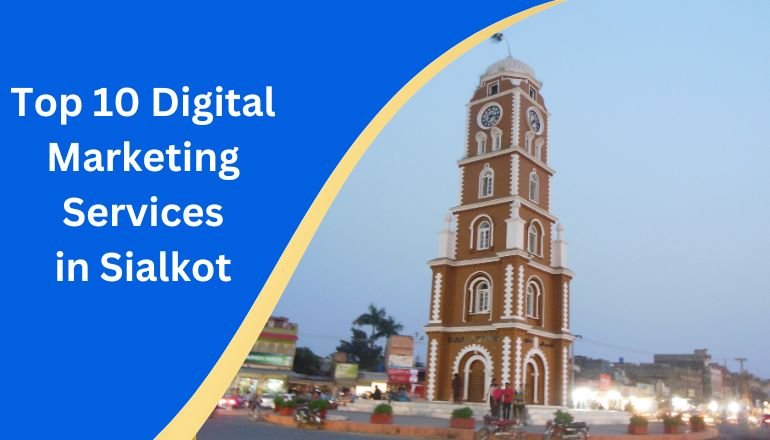In an increasingly competitive online world, tracking the performance of local SEO is essential for businesses aiming to gain visibility in their geographic market. As digital marketing strategies such as SEO, PPC, and social media become integral parts of how businesses connect with customers, monitoring how well your website ranks for local searches can significantly influence brand visibility and customer acquisition. At Best Digital Marketing Agency, we specialize in developing data-driven SEO strategies that help businesses optimize their local search performance and achieve measurable results.
In this article, we’ll explore the methods, tools, and best practices for effectively tracking your local SEO performance and improving your local online presence.
1. Introduction to Tracking Local SEO Performance
Tracking local SEO performance refers to measuring how well your website ranks for search queries relevant to your geographic location. These rankings directly influence your visibility in local searches—critical for increasing foot traffic and converting searches into real business leads. Local SEO is more than just having your business listed in local directories—it’s about optimizing for specific location-based keywords, and ensuring Google My Business (GMB) listings are in top form.
When tracking your local SEO efforts, you want to look at metrics that help you assess if your website is effectively connecting with customers nearby and improving local search visibility. These include keyword rankings, traffic sources, and customer interactions.
2. Why Tracking Local SEO Performance Matters
Tracking your local SEO performance is vital for several reasons:
- Measure Success: How do you know if your local SEO strategies are working? By tracking performance, you can evaluate the effectiveness of your efforts.
- Boost Local Rankings: Analyzing performance data helps identify opportunities to improve rankings for location-based keywords, thus gaining visibility and outpacing local competitors.
- Improve Conversions: Better visibility for local searches means more chances to convert online visitors into offline customers. Knowing where you’re performing well and where you need adjustments allows you to fine-tune for higher conversion optimization.
- Enhance ROI: By focusing on actionable insights derived from performance data, businesses can refine their digital marketing campaigns and improve ROI.
Emphasize the importance of tracking local search rankings, Google My Business insights, and user engagement metrics.
3. Key Components of Tracking Local SEO Performance
Tracking your local SEO performance involves several metrics and tools:
- Local Keyword Rankings: Track your position for location-based searches using tools like SEMrush, Ahrefs, or Google Search Console. Look for keywords specific to your location, such as “best coffee shop in [city]”.
- Google My Business Insights: Review data such as search queries, customer actions (calls, website visits), and direction requests from your GMB listing. This gives valuable insights into how local consumers are finding and interacting with your business.
- Local Backlinks: Monitor the quality and quantity of local backlinks pointing to your site. Links from local sources or industry-relevant sites contribute to authority and visibility in the local market.
- User Engagement and Website Analytics: Tools like Google Analytics help track local traffic patterns, bounce rates, and the effectiveness of localized content and landing pages.
4. Best Practices for Tracking Local SEO Performance
For businesses to effectively track and improve their local SEO, following best practices is essential:
- Regular Monitoring: Monitor your rankings on a weekly or monthly basis to detect fluctuations, especially during seasons of peak interest.
- Track GMB Insights: Regularly check and optimize your Google My Business listing by analyzing insights such as click-through rate (CTR), actions taken (calls, site visits), and customer reviews.
- Geo-Targeted Content: Regularly update location-specific content (e.g., blog posts, landing pages, or testimonials) to align with common local search queries.
- Analyze Competitor Performance: Track competitors in your area for insight into their local SEO strategies. By using competitive analysis tools, you can identify gaps and opportunities for local visibility improvements.
- Review Traffic Sources and Conversions: Track website traffic growth from local searchers and evaluate how users from specific geographic regions are interacting with your site, and whether these actions are converting into desired results.
5. Common Mistakes to Avoid When Tracking Local SEO Performance
Tracking local SEO performance is not always straightforward, and there are some common mistakes businesses should avoid:
- Neglecting GMB Optimization: Many businesses fail to complete or regularly update their Google My Business listings. Neglecting this can significantly hinder performance tracking and local rankings.
- Ignoring Mobile Traffic: Since many local searches are mobile, overlooking the analysis of mobile search results or failing to optimize your website for mobile can lead to missed opportunities.
- Overlooking Citations Consistency: Local citations are essential for local SEO performance. Inconsistent NAP (Name, Address, Phone number) information across the web can lower your ranking and cause confusion.
- Focusing Only on Keyword Rankings: While keyword rankings are important, user engagement metrics such as conversions, on-site time, and bounce rates are just as crucial in assessing the true effectiveness of your SEO strategy.
6. How Local SEO Tracking Fits into a Comprehensive Digital Marketing Strategy
Effective tracking of local SEO performance should complement other digital marketing strategies such as:
- Integrating Local PPC Campaigns: Local ads from Google Ads or Bing can complement organic local SEO, pushing businesses to appear in both local search results and paid placements.
- Social Media: Engaging with local communities on platforms like Facebook, Instagram, or LinkedIn can improve customer interaction. Monitoring metrics like location-tagged posts and local engagement can inform broader marketing decisions.
- Content Marketing: Combining content optimization for SEO with local focus, such as creating posts for local events or local industry insights, maximizes visibility.
- Integrated Marketing Strategy: Including SEO, PPC, and social media marketing together with regular performance tracking drives stronger business results.
Conclusion: Key Takeaways
Tracking local SEO performance provides the data needed to refine strategies and enhance a business’s visibility within its local market. Consistent evaluation of keyword rankings, Google My Business insights, and local backlinks ensures that businesses can continuously optimize their local SEO strategies. At Best Digital Marketing Agency, we help you measure the impact of your local SEO efforts and make adjustments for ongoing success in your local market. Contact us to learn more about tracking and enhancing your local search visibility for optimal business growth.













